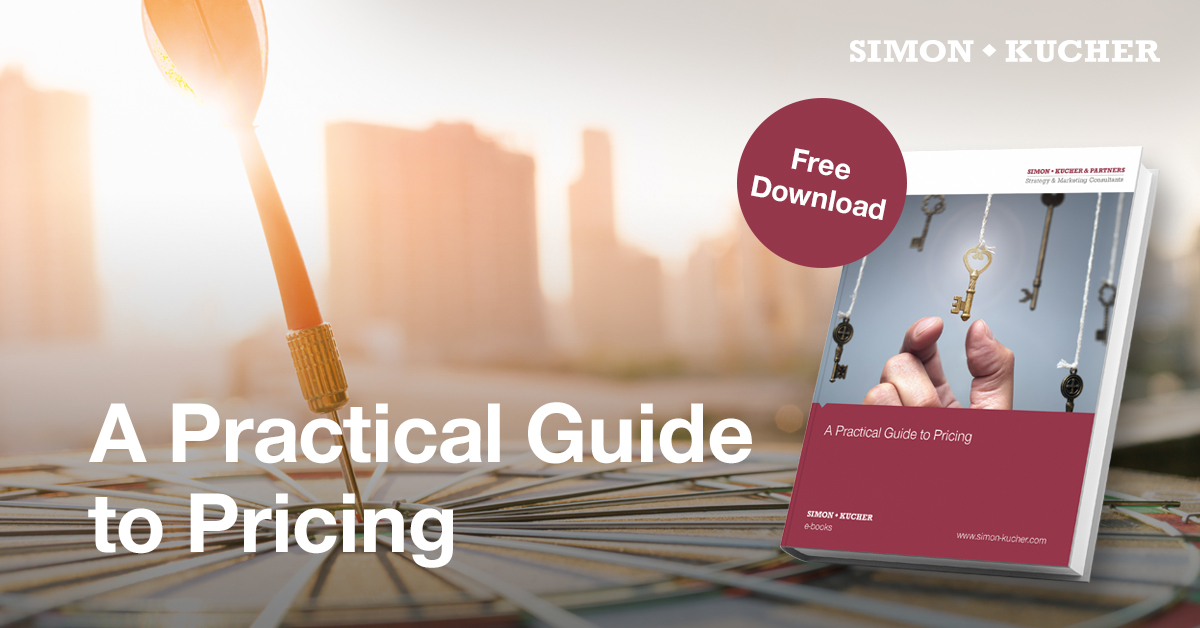Many companies are forced to pass on increased costs to maintain their own revenues. In part 6 of our Pricing Basics series, Nina Scharwenka tells us how to beat price pressure and successfully implement price increases. The key to success lies in the preparation!
Price hikes. A delicate topic that companies prefer to avoid. You don’t get anything if you don’t ask for it, and in recent years, nobody had to ask. However, higher prices for raw materials, inflation, and new environmental regulations are reversing the trend. Cost increases will make their way to customers’ wallets, one way or another.
Why is it so difficult to raise prices? A recent online Simon-Kucher survey on price increases revealed that only 17% implement their price increases successfully. Have companies simply forgotten how to increase a price?
Increasing prices for a product or service can be uncomfortable. But with the right preparation, it is definitely possible! Here are five steps for companies to successfully prepare for and implement price increases.
1. Know your power: Assess the current relationship
Reflect on actual business context to identify your strategic advantages. Your current relationship with the customer will play a role in the success of the planned price increase. Have price increases been successfully executed in the past? What were the typical challenges and what can you learn from them? Also consider when your contract allows for the next price increase and keep an eye on your T&Cs! Your conditions system may need adjusting to prevent high discounts from cancelling out the effect of your price increases. And increasing price could even open up an opportunity to save on discounts.
2. Know the impact: Assess potential loss
Companies often avoid price increases due to a fear of losing market share. That’s why it is important to conduct an impact analysis beforehand. Start by looking at your history of introducing price increases with this customer. What were the reasons for success or failure? What can be learned from this previous experience? Differentiating on a brand, category, or product level can make increases appear more acceptable. For example, analysis reveals relatively low attention on B products, but high price sensitivity toward A products. You are more likely to succeed with increases in the B category, even if costs have increased for A products. There tends to be high price sensitivity with commodities. Prices for services and surcharges often fall below the radar and are typically accepted without discussion.

3. Know your negotiation range: Define your walk-away price
Successful price increase negotiations require clear goals and guidelines. So before entering price negotiations, it is important to clearly define your entry and walk-away price points. Know where you have room to maneuver, and when you should stop or escalate. You will also need an intelligent set of bargaining chips at the ready. Develop a list of potential price and non-price related concessions in advance. These should be prioritized according to the value to the customer and your company. Finally, consider the different purchasers who may be involved in the negotiation. What are their seniority levels and histories? Map out scenarios in a decision tree that quickly identifies the different negotiation techniques to use with different negotiating partners.
4. Know your story: Stay confident with convincing communication
One of the biggest fails with pricing increases is that no specific reasons are given to the customer. With some luck on your side, that might fly with, say, a 2% increase. But higher increases definitely need justification. Rather than leave success to chance, it is essential to create a powerful story around your price increases before communicating them. Understand your customer’s supply chain to ensure your story is consistent, concise, and customer-specific. Start with the main benefits your company offers to the customer and focus on value, not just on cost. For example the service quality, reliability, limited availability, product improvements that save time or make the product easier to handle. Frequently refer to factors surrounding the upcoming increases in all communication, e.g. calls, letters, and customer visits.
5. Know your strategy: Motivate sales with the right targets
In the end, it is your sales reps who will need to counter the objections from customers. Equip your reps with materials that support your compelling story. E.g. a negotiation roadmap, argumentation guidelines, and battlecards. Set clear price implementation targets, build confidence through training, and monitor your sales reps closely. Last but not least, management has to take a clear stand. Sales should not be scared to lose customers or business through price increases. Consistent communication from the top is essential to avoid conflict between price and volume targets. And the sales team should be to celebrate the success of price increases too. Make sure the compensation model is modified to reward price increases, and that rebellious reps are held accountable for price deviations. It’s about switching the mindset from volume to value.
Unable to increase your prices? It is easy to blame price pressure. The competition is lowering their prices. The market is not accepting increases right now. We know the excuses all too well.
Take a closer look and you might find you are standing in your own way. Don’t let poor preparation and compromises in negotiations derail your price increases. In the battle for profits, preparation beats price pressure. Look at your past price increase experiences, contractual agreements, and terms and conditions to determine your bargaining power. Define how far you are willing to go in the negotiations, consider counter offers, and use communication to prepare customers for price increases. And remember: Only talk about costs if you can also talk about value!
Enjoyed reading our article? Good news: This popular series is available as A Practical Guide to Pricing! Download our free eBook now and learn how to achieve a sustainable, competitive advantage through pricing!
Read more from our expert blog series Pricing Basics:
Part 1: The Importance of Pricing
Part 2: Pricing Power, and How You Can Profit From It
Part 3: Why Prices End in 99… and Other Psychological Pricing Tactics
Part 4: Value Pricing Changes the Rules of the Game
Part 5: Digital Transformation – A New Way of Working
Part 7: Stay Strong – How to Fight a Price War
Part 8: Skimming or penetration pricing?

